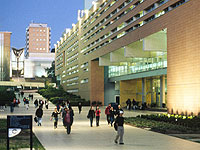|
|||||||||||||||||||||||||||||||||||||||||||||||
| Statistical and Solid State Physics - PHYS3021 | |||||||||||||||||||||||||||||||||||||||||||||||

Description Thermodynamic probability, Boltzmann entropy, Boltzman distribution, Fermi-Dirac and Bose-Einstein distributions, thermodynamics from the partition function. Micro-canonical, canonical and grand canonical ensembles, fluctuations. heat capacity of diatomics, Einstein and Debye models, paramagnetism. Blackbody radiation, Bose-Einstein condensation, liquid helium. Fermi energy, free elctrons and the Fermi gas, applications.
Free electron model of metals, Bloch states and energy bands, reciprocal space and the Fermi surface, electron dynamics, Landau levels. Crystal structure, Brillouin zones, elementary diffraction theory, bonding, cohesive processes, impurity states, impurity conductivity. Lattice vibration, monatomic and diatomic chain, acoustic and optic phonons, Einstein and Debye models, dielectric effects. Assumed Knowledge: A first course in macroscopic thermodynamics and basic quantum theory plus a familiarity with differential equations.
|
|||||||||||||||||||||||||||||||||||||||||||||||


